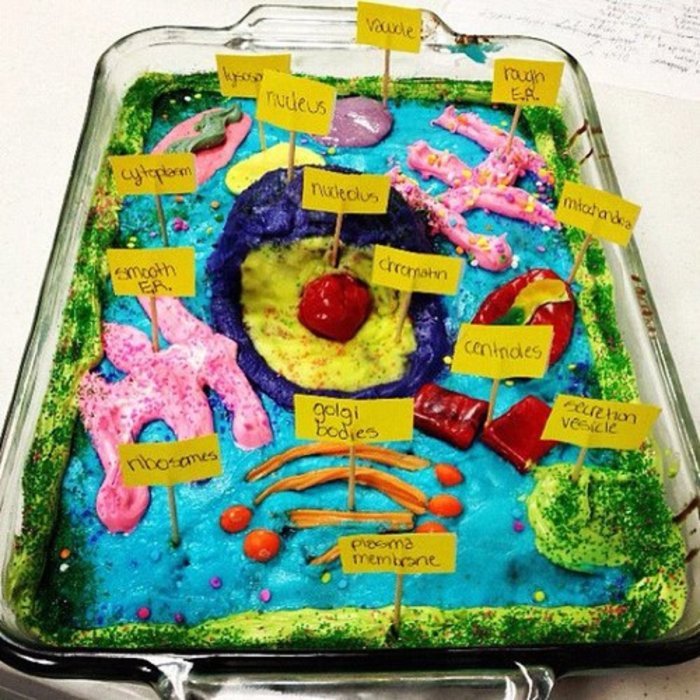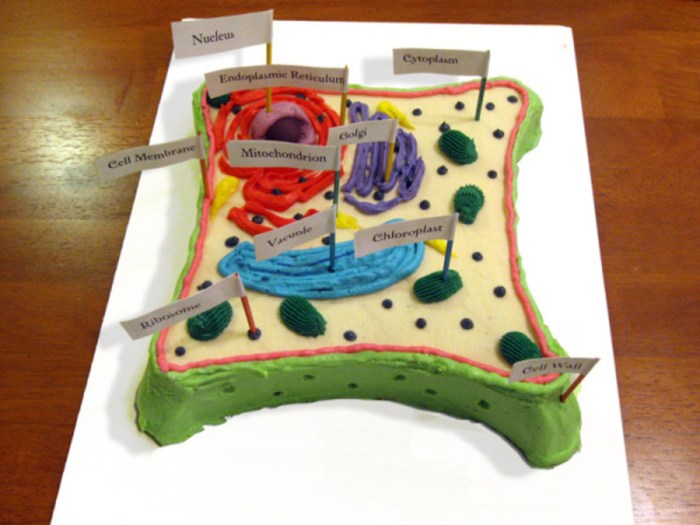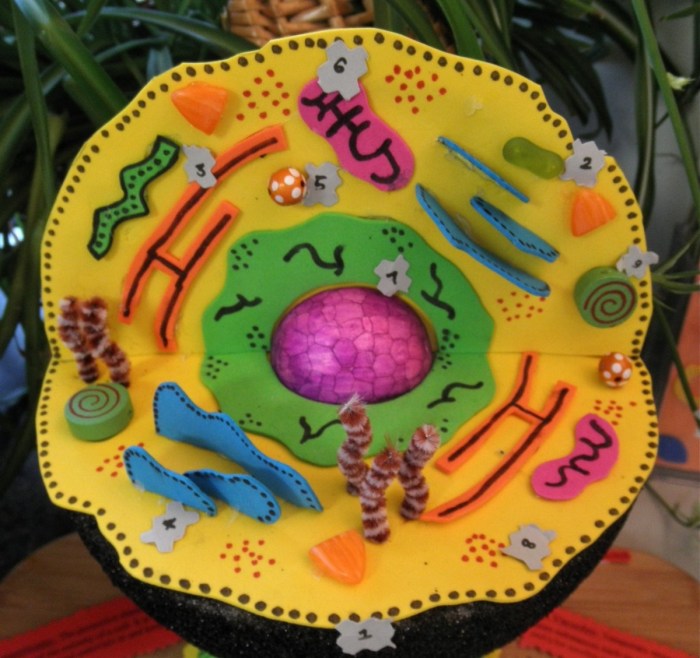3D cell projects are revolutionizing the way we study biology, pushing the boundaries of scientific discovery and leading to breakthroughs in medicine, biotechnology, and beyond. These miniature worlds, meticulously crafted to mimic the complex environment of living tissues, offer a powerful alternative to traditional 2D cell cultures, providing a more realistic and insightful platform for research.
Imagine being able to study how a drug interacts with a tumor, or how a new gene therapy affects a specific cell type, all within a controlled environment that mirrors the human body. This is the promise of 3D cell projects.
From organoids that resemble miniature organs to spheroids that capture the dynamic behavior of cells in 3D, these models are unlocking secrets that were previously hidden, leading to a deeper understanding of disease mechanisms, drug development, and the potential for personalized medicine.
Introduction to 3D Cell Projects
Imagine being able to study how a drug interacts with human cells in a realistic environment, or grow a miniature version of a human organ to test new therapies. These are just some of the possibilities offered by 3D cell projects, a revolutionary approach in biological research that is transforming our understanding of human biology and disease.
3D cell projects, also known as 3D cell cultures, involve creating three-dimensional models of human tissues and organs using living cells. These models mimic the complex structure and function of real tissues, providing a more accurate and physiologically relevant platform for research than traditional two-dimensional (2D) cell cultures.
Advantages of 3D Cell Models
While 2D cell cultures have been a mainstay in biological research for decades, they have limitations in accurately representing the complex interactions and microenvironment of living tissues. 3D cell models overcome these limitations by providing a more realistic and physiologically relevant platform for studying cellular behavior and disease processes.
- Enhanced Cell-Cell Interactions:3D models allow cells to interact with each other in a three-dimensional space, mimicking the intricate network of interactions found in living tissues.
- Improved Cell Function:Cells grown in 3D environments exhibit more realistic cellular functions, such as differentiation, proliferation, and response to stimuli, compared to 2D cultures.
- Better Drug Discovery and Development:3D cell models provide a more accurate platform for testing the efficacy and toxicity of drugs, leading to more effective and safer therapies.
- Advanced Disease Modeling:3D models can be used to study disease mechanisms, develop personalized treatments, and test the effectiveness of new therapies.
Types of 3D Cell Projects
There are various types of 3D cell projects, each offering unique advantages and applications in research. These include:
- Organoids:Organoids are three-dimensional structures that mimic the structure and function of specific organs, such as the brain, liver, or intestines. They are created by culturing cells in a specific environment that encourages them to self-organize into organ-like structures.
- Spheroids:Spheroids are three-dimensional aggregates of cells that form spherical structures. They are often used to study cell-cell interactions, tumor growth, and drug response.
- Microfluidic Devices:Microfluidic devices are tiny chips that create controlled microenvironments for cell culture. They allow researchers to manipulate cell behavior, study cell migration, and model tissue development.
Techniques and Technologies for 3D Cell Projects
Creating realistic 3D cell models requires specialized techniques and technologies that can support cell growth and mimic the complex environment of living tissues. Here are some of the key methods used in 3D cell projects:
Bioprinting
Bioprinting is a revolutionary technique that uses bioinks, which are materials containing living cells, to print three-dimensional structures layer by layer. This allows researchers to create complex tissue models with precise control over cell placement and tissue architecture. Bioprinting is particularly useful for creating tissue models with specific geometries and vascular networks, which are crucial for mimicking the function of real organs.
Microfluidics
Microfluidics is a technology that manipulates fluids in tiny channels and chambers, creating controlled microenvironments for cell culture. Microfluidic devices can be used to create gradients of nutrients, oxygen, and drugs, allowing researchers to study how cells respond to different environmental cues.
Microfluidic devices are also used to model tissue development, cell migration, and drug delivery.
Scaffold-Based Methods
Scaffold-based methods involve using a three-dimensional scaffold to provide structural support for cells and guide their growth and organization. Scaffolds can be made from a variety of materials, including hydrogels, polymers, and natural extracellular matrix components. These scaffolds mimic the extracellular matrix, the complex network of proteins and molecules that surround cells in living tissues.
Scaffolds provide a framework for cells to attach, grow, and differentiate, creating more realistic and functional tissue models.
Biomaterials in 3D Cell Projects
Biomaterials play a crucial role in 3D cell projects, providing the structural support and biochemical cues that cells need to grow and function in a three-dimensional environment. Some common biomaterials used in 3D cell projects include:
- Hydrogels:Hydrogels are water-based polymers that mimic the properties of the extracellular matrix. They are biocompatible, biodegradable, and can be customized to control cell behavior.
- Polymers:Polymers are long chains of molecules that can be engineered to have specific properties. They are often used to create scaffolds for cell growth and to encapsulate cells for delivery.
- Natural Extracellular Matrix Components:Natural extracellular matrix components, such as collagen, fibrin, and hyaluronic acid, are often used as biomaterials in 3D cell projects. They provide a more natural environment for cells to grow and function, mimicking the complex interactions found in living tissues.
Advantages and Disadvantages of 3D Cell Project Technologies
| Technology | Advantages | Disadvantages |
|---|---|---|
| Bioprinting | High precision and control over cell placement and tissue architecture, allows for creation of complex tissue models with specific geometries and vascular networks | Can be expensive and time-consuming, requires specialized equipment and expertise |
| Microfluidics | Allows for creation of controlled microenvironments for cell culture, can be used to study cell behavior and tissue development | Can be challenging to design and fabricate, may require specialized expertise |
| Scaffold-Based Methods | Provides structural support for cells, can be customized to control cell behavior and mimic the extracellular matrix | Can be difficult to control the degradation and biocompatibility of scaffolds, may require extensive optimization |
Applications of 3D Cell Projects in Research
3D cell projects are revolutionizing research in various fields, offering unprecedented opportunities to study human biology and disease, develop new therapies, and test the safety of drugs.
Drug Discovery and Toxicology Testing
3D cell models provide a more realistic platform for testing the efficacy and toxicity of drugs compared to traditional 2D cell cultures. They allow researchers to study how drugs interact with cells in a three-dimensional environment, mimicking the complex interactions found in living tissues.
This leads to more accurate predictions of drug efficacy and toxicity, reducing the risk of side effects and improving patient outcomes.
Tissue Engineering

3D cell projects are playing a crucial role in tissue engineering, the field that aims to create functional tissues and organs for transplantation. By culturing cells in a three-dimensional environment, researchers can create tissues with specific properties and functions, potentially providing a solution for organ shortages and improving patient outcomes.
Disease Modeling
3D cell models provide a powerful tool for studying disease mechanisms and developing personalized treatments. Researchers can create models of specific diseases using cells derived from patients, allowing them to study the disease process in a more realistic and relevant context.
This enables the development of targeted therapies that address the specific needs of each patient.
Real-World Examples of Successful Applications

3D cell projects have already yielded significant advancements in various research areas. For example, researchers have used 3D cell models to:
- Develop new cancer therapies:3D tumor models have helped researchers identify new targets for cancer drugs and develop more effective therapies.
- Test the safety of new drugs:3D liver models have been used to assess the toxicity of new drugs before clinical trials, reducing the risk of adverse events.
- Study the development of Alzheimer’s disease:3D brain models have provided insights into the mechanisms of Alzheimer’s disease, leading to the development of new diagnostic tools and therapies.
Challenges and Future Directions in 3D Cell Projects

Despite the significant progress in 3D cell projects, there are still challenges that need to be addressed to fully realize their potential.
Current Challenges
- Scalability:Scaling up the production of 3D cell models for research and clinical applications remains a challenge. Current methods are often labor-intensive and expensive, limiting their widespread adoption.
- Standardization:The lack of standardized protocols for creating and testing 3D cell models makes it difficult to compare results across different laboratories. This hinders the reproducibility of research findings and slows down progress in the field.
- Reproducibility:Reproducibility is a critical issue in all scientific research, and 3D cell projects are no exception. The complex nature of 3D cell models makes it challenging to ensure reproducibility across different laboratories and research groups.
Future Directions, 3d cell projects
Despite these challenges, the future of 3D cell projects is bright. Researchers are continuously developing new technologies and approaches to address these challenges and unlock the full potential of 3D cell models.
- Development of More Complex and Realistic Models:Researchers are working to develop more complex and realistic 3D cell models that better mimic the structure and function of living tissues. This includes incorporating different cell types, creating vascular networks, and mimicking the complex microenvironment of tissues.
- Integration of Advanced Imaging Techniques:Advancements in imaging technologies are providing researchers with new tools to study 3D cell models in greater detail. This includes techniques like live-cell imaging, high-resolution microscopy, and advanced imaging techniques that allow researchers to study cell behavior in real-time.
- Use of Artificial Intelligence:Artificial intelligence (AI) is being used to analyze large datasets generated from 3D cell projects, identify patterns, and predict outcomes. This is helping researchers to better understand the complex interactions within 3D cell models and accelerate the development of new therapies.
Impact of 3D Cell Projects on Research Areas
| Research Area | Potential Impact of 3D Cell Projects |
|---|---|
| Medicine | Development of personalized therapies, improved drug discovery and development, more accurate disease modeling, and advancement in tissue engineering |
| Biotechnology | Creation of new biomaterials and drug delivery systems, development of advanced cell therapies, and improved understanding of cellular processes |
| Environmental Science | Development of new models for studying the effects of environmental toxins on human health, improved understanding of the impact of environmental changes on biological systems |
Closure
The future of 3D cell projects is bright, with ongoing advancements in bioprinting, microfluidics, and biomaterials driving the development of even more sophisticated and realistic models. As these technologies continue to evolve, we can expect to see even more groundbreaking discoveries in fields ranging from drug discovery to regenerative medicine.
3D cell projects are not just a scientific tool, but a powerful platform for innovation, paving the way for a healthier and more sustainable future.
Top FAQs
What are the main benefits of using 3D cell models over traditional 2D cell cultures?
3D cell models offer several advantages over 2D cultures, including a more realistic representation of the cellular environment, improved cell-cell interactions, and a better understanding of cell behavior in a 3D context.
What are some of the challenges associated with 3D cell projects?
Challenges include ensuring reproducibility, scalability, and standardization of 3D cell models. Researchers are actively working to address these challenges to ensure the widespread adoption and reliability of 3D cell technology.
How can 3D cell projects contribute to personalized medicine?
3D cell models can be used to create patient-specific models, allowing researchers to study the effects of drugs and therapies on individual cells and tissues. This personalized approach can lead to more effective and targeted treatments.